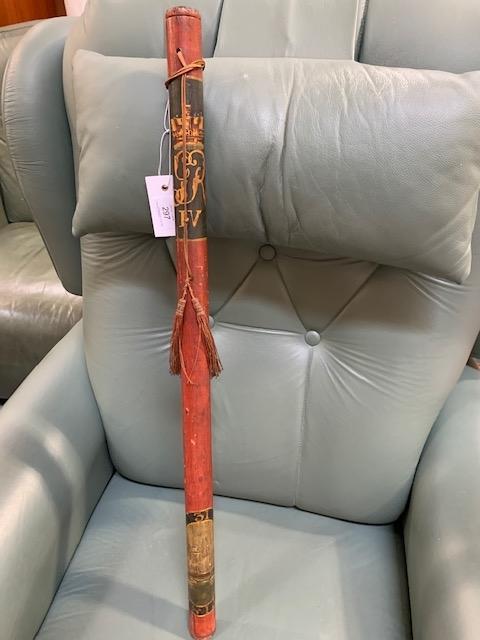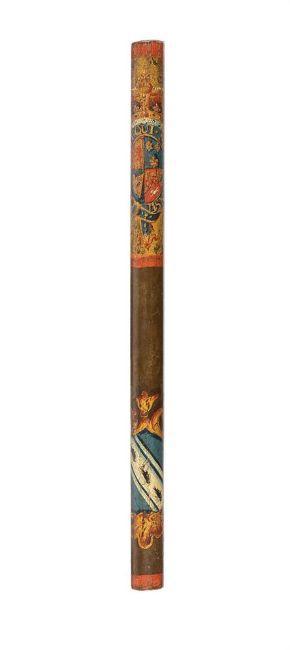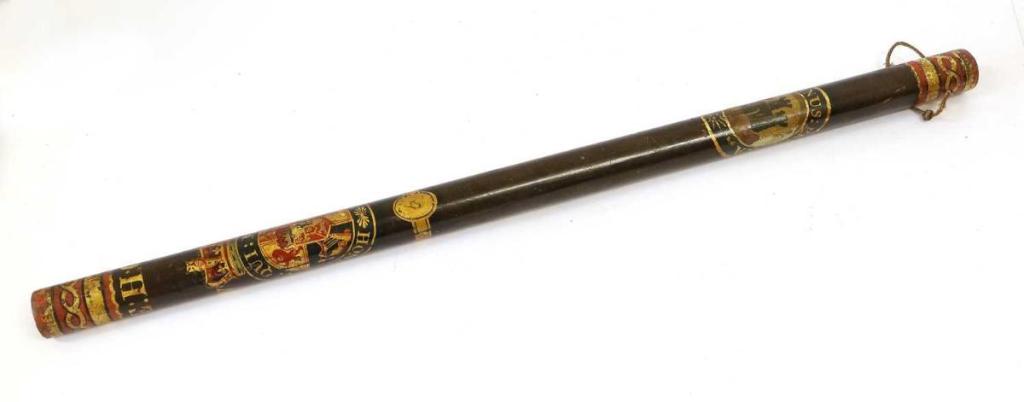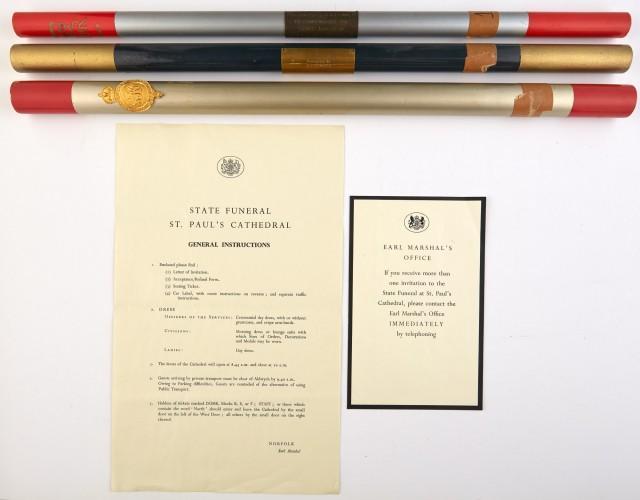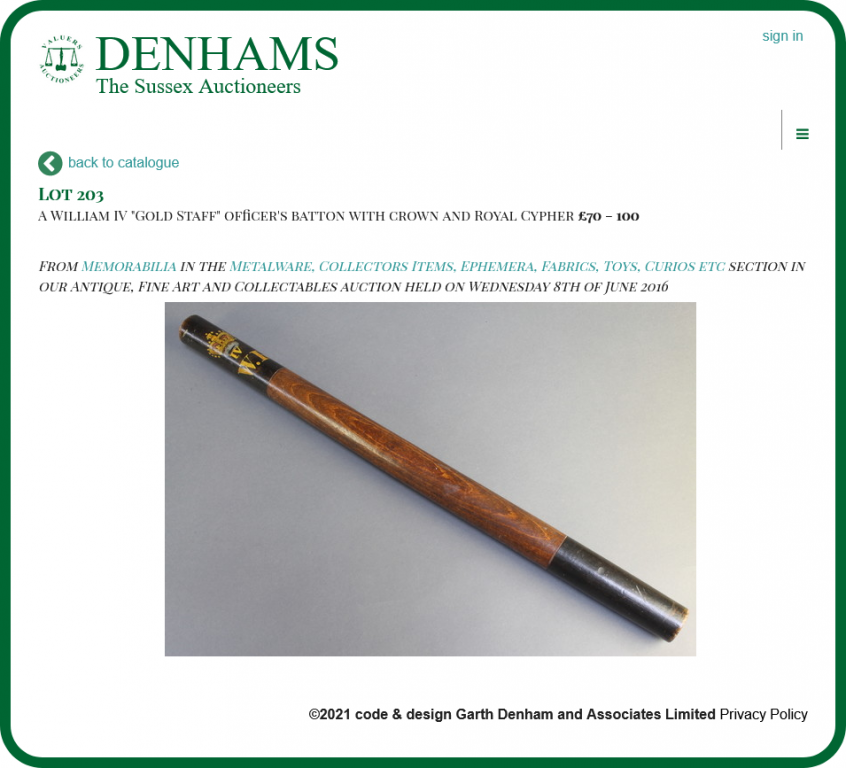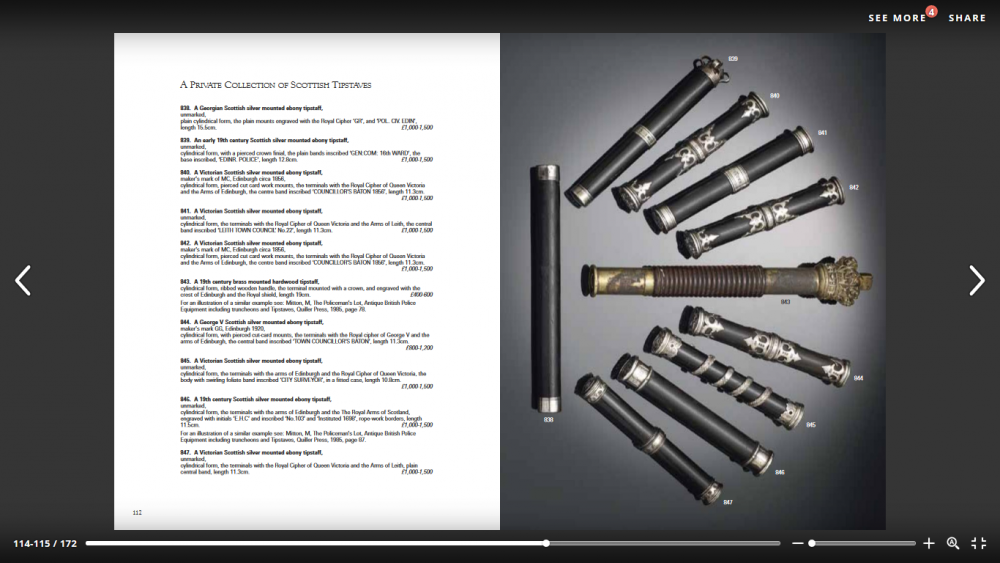-
Posts
106 -
Joined
-
Last visited
About Nightbreak

Profile Information
-
Gender
Male
-
Location
Ottawa, Canada
-
Interests
Canada General Service Medals
The Victoria Cross
The Napoleonic Wars - Peninsular areas
Colonial Auxiliary Long Service & Officers Decorations
Recent Profile Visitors
The recent visitors block is disabled and is not being shown to other users.
Nightbreak's Achievements
-
Oh, YOU'RE the one who sniped that Victorian Coronation baton from me! We had the same bid amount and I thought I'd won for a couple of hours there, but I think yours took precedence because of time. I'd be annoyed, but you saved me a good deal of money in the process. In fact, I think all the ones I've posted here have ended up in your collection. The Churchill & two Jubilee batons I remember seeing from that US Auction. I would also say it's a shame that Charles did not revive the practice, but it means less flailing around for us to try and get ones for ourselves. I appreciate your collection of long staves there, and see at least two from Perthshire, and that Edinburgh High Constable's Medical one I was considering bidding on last year. Posted a few of mine over in the Mervyn Mitton's British & Colonial Police section, but will reveal them all here in their groupings. Several are Manorial Staves, more for households than police or magistrates, and I have one of the Administrator staves from Christ's Hospital as well! Let's see if I can recite them all: Longe Family Household Staff Cator Family Staff Victorian Edinburgh High Constable Staff George III Edinburgh Staff George IV Roper of Saxlingham Family Staff George III Midlothian Scottish short staff George IV Dundee Staff Victorian Kirkcaldy Staff George III Edinburgh Staff William IV Aberdeen Staff Victorian Perthshire Constables Staff George III Calton Staff George III Brechin Staff George III Kinross-shire Staff George III Edinburgh/Midlothian staff I had to go out and get a copy of John Green's Book "Scottish Insignia As Used By Old Police Forces" to identify a couple of them, and I do have one or two of his pieces illustrated there in my collection currently. Tom, thank you so much for continuing to post these. You have a marvelous collection, I'm thrilled to see what you've accumulated (at least you don't have to suffer the pain of shipping to Canada), and I can't wait to see what you get next. Andrew (Nightbreak)
-
Some of the staves that I've watched go by at auction or sale the last few years. None of them ended up in my collection, sadly, despite what I thought were fine attempts at purchase. Others were just too damaged or unknown to me to take the risk. BurntIsland in Fife - George IV George III Dysart tipstaff - Top was too worn down for me to appreciate the asking price. EHC Treasurer's Staff - William IV. Very nice condition. Almost too nice. Southouse and Portington - Unknown monarch. Another William IV Edinburgh High Constable's staff. Notice the town crest upside down from the Coat of Arms in comparison to the Treasurer's staff. A somewhat common sight with staves from here and Fife, but I always wonder if that's inaccurate, or if I'm looking at a magistrate's staff instead. William IV EHC "Medical" staff to a surgeon. Is such a thing even real? No one would tell me while the auction was on, making bidding a bit fraught.
-
As an update after the coronation of Charles III, Gold Staff Officers were spotted in the parade. It appears as if Charles' baton is similar to his mother's, with a gold staff and light blue ends. The image here is from Wikipedia. Lt-Col. Nana Kofi Twumasi-Ankrah, MVO, of the Household Cavalry. Good to know that this tradition endures.
-

Victorian VR Truncheon
Nightbreak replied to davew's topic in Great Britain: Mervyn Mitton's British & Colonial Police Forces
You're welcome, Davew. My commiserations for the result, but this adds to your experience and knowledge in the long run. And as long as you enjoy it, that's a good thing in itself. Andrew -

Victorian VR Truncheon
Nightbreak replied to davew's topic in Great Britain: Mervyn Mitton's British & Colonial Police Forces
It's apparently the coat of arms of the Institute of Directors, a British professional organization founded in 1903, but the arms weren't granted until 1952. So this appears to be of recent manufacture. https://www.heraldry-wiki.com/heraldrywiki/wiki/Institute_of_Directors -

Victorian VR Truncheon
Nightbreak replied to davew's topic in Great Britain: Mervyn Mitton's British & Colonial Police Forces
Welcome to the forum and to truncheon collecting! If you could perhaps take a close-up picture of the coat of arms, I can work with the motto and heraldic features to figure out which town it's supposed to represent. Chances are good one of our reference books will have others from that location to compare it to. Andrew -
Dr. Balchin, thank you very, very much for this look at yours and your father's collection. It's wonderful to see another 1911 Investiture Green Staff Officer's baton, too. I acquired mine as part of a package with a William IV Aberdeen short staff, which was what kickstarted this particular interest. I'm pleased to see those three batons from before, and they all look in marvelous condition. Your Order of the Bath Investiture staff is in much better shape than the one I acquired from Australia the other month. I do hope one day that Richard from Vancouver will reappear to tell us more, because it sounded like he had quite the collection of his own. This has become our best resource currently because often the College of Arms can't or won't answer questions about the creation or styles of batons for royal events. It's often beyond their memory or knowledge, to be honest. So people searching Google for information on their items will likely find us near the top of the list. At this point, all we need is someone to produce a Georgian (IV or III) coronation staff, or perhaps ones from a Silver Staff Officer from Victorian Jubilees. I'll be very excited the day a 1969 Investiture baton does appear, if they were even made.
-
Hi, Hugh. Nice to know you have one of these pieces. It would have been Princess Elizabeth's wedding from 1947 before she became Queen, as Richard pointed out above. I don't know if there's a list of those who were ushers for the wedding, if that's what you're asking, but it's possible it could be mentioned somewhere in your Grandfather's career. Do you have an image?
-
It's been nearly three years since this topic was last updated, and I have done as much gathering as I can. Since many Google Searches for phrases like "Coronation Baton", "Gold Staff Officer" and even "Green Staff Officer" bring up this thread, I feel it's become the best Illustrated Reference Guide we currently have. Apologies to Ross for the hijack, but I'm going to add some more information here to fill a few holes, and add some more images for those searching. Whoever scrapes this site for images to add to Pinterest will surely appreciate it. There are batons for not just Coronations, but also for Investitures and Silver Jubilee Thanksgiving Services. I've seen several examples and collected a handful, with an eye to others. We've seen an example in this thread of one for Princess Elizabeth's wedding in 1947, and the possibility exists for funerals, as I've seen one for Churchill's funeral in an auction last year. I have seen batons for William IV, Victoria, and so on up the chain to Elizabeth II. There are some different styles overall. William IV's was *claimed* to be brown with black ends, although it could be a simple misidentification by the auction house (see attached). A Victorian coronation baton is black with gold lettering on both the royal cipher and the year. Edward VII and George V, follow the 'red body with gold ends' format. They measure 30 inches (76 cm) in length This color scheme reverses for George VI, as seen below, although I have found a red with gold ends version. Both come in at 21 inches (53.5 cm) Elizabeth II is shown as a gold baton with blue ends in at least three examples, although again I have seen a gold with red ends version from a fellow collector. It measures 21 inches (53.5 cm) We know those who serve as ushers in Coronations are referred to as Gold Staff Officers. If it's an Investiture, in the case of those for the Prince of Wales in 1911 and 1969, the ushers are Green Staff Officers or Silver Staff Officers. Green appears more often in searches, but I have seen an armband and instruction booklet referencing 'Silver'. The ones from Prince Charles' 1969 Investiture appear to be mostly Heralds from the College of Arms. Silver Staff Officers are from the Silver Jubilee Thanksgiving Services of 1935 and 1977, for George V and Elizabeth II, and measure 21 inches (53.5 cms). The staff shown above that Richard identified as belonging to 'an early Investiture of the Order of the Bath' is because of its three crowns. These appear on the breast Star of the Order. I recently acquired one of my own (seen in this post), and while it's quite battered, it's a nice addition. The gold and black baton with the Duke of Norfolk's crest and Earl Marshal Batons with '48' on it has been tentatively identified as a "household staff". Number 46 was illustrated in a mid-1920s book on truncheons by Erland Fenn Clark. The three batons sold at auction last year from Churchill's funeral consist of the 1977 Silver Jubilee, the 1935 Silver Jubilee, and one black baton with gold ends that purports to be from the funeral itself. I am always interested in other styles, occasions, and mentions of these, and if anyone wishes to add on, I'd be more than happy to learn more.
-

Covid 19 White House coin......
Nightbreak replied to bigjarofwasps's topic in Coins & Commemorative Medallions
I was *wondering* if they'd get around to this one! Note that the "White House Gift Shop" is not affiliated with the White House in any way. The owner is in Pennsylvania and merely trademarked the name. This last sentence is obvious by his collection of "Great Moments In The History Of President Trump" coins. -
The stands are pewter, from a chain engraving shop that sells them as a stand for pewter diploma cases. (The shop has a *lot* of pewter in it!) I went looking for another example of my Edinburgh tipstaff, and the one listed here, No. 103, is classified as 19th century, with no monarch. What a glorious sight this is, though. Woolley and Wallis Silver catalogue from 2011. This must have been from someone's collection.



